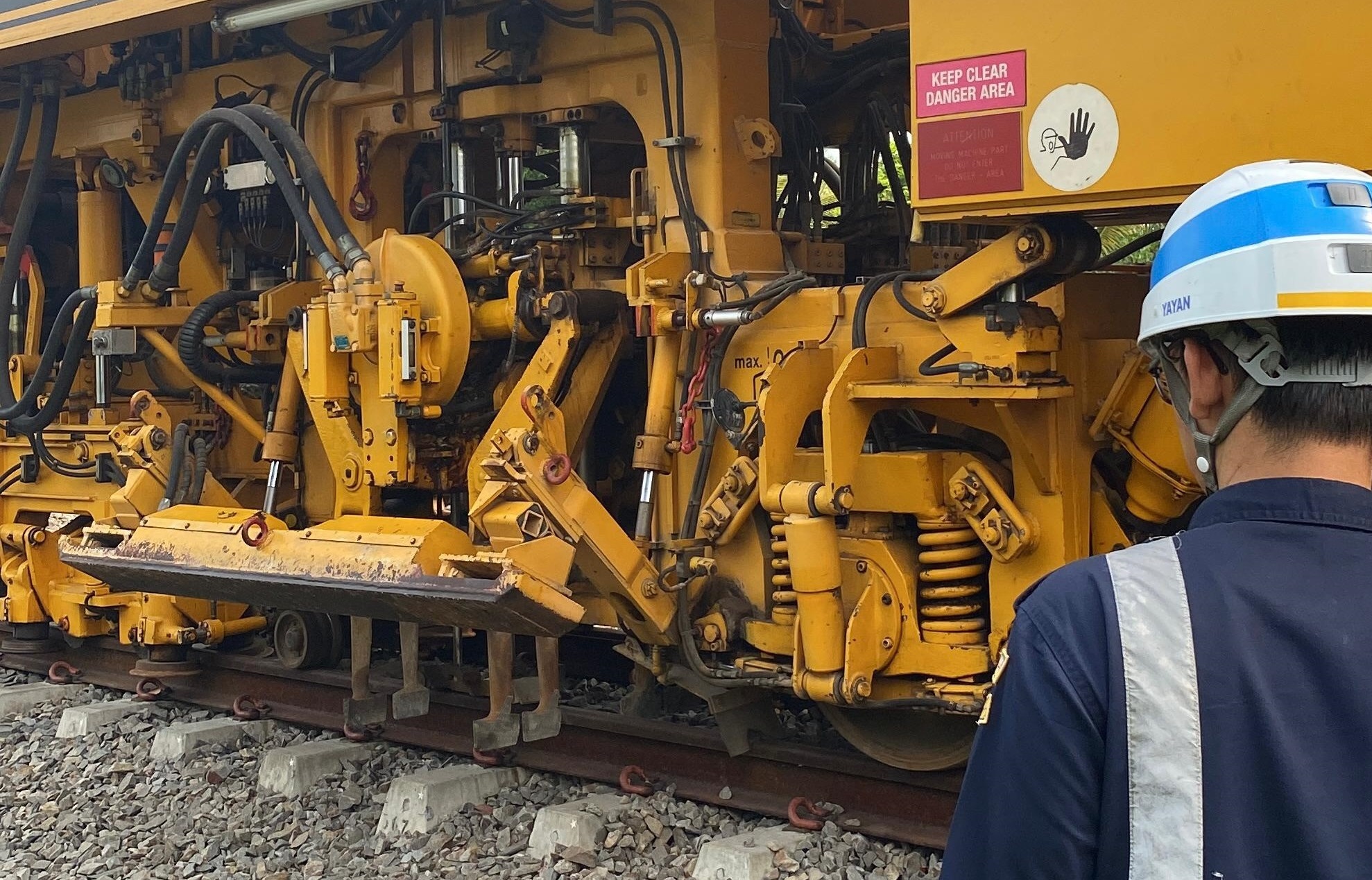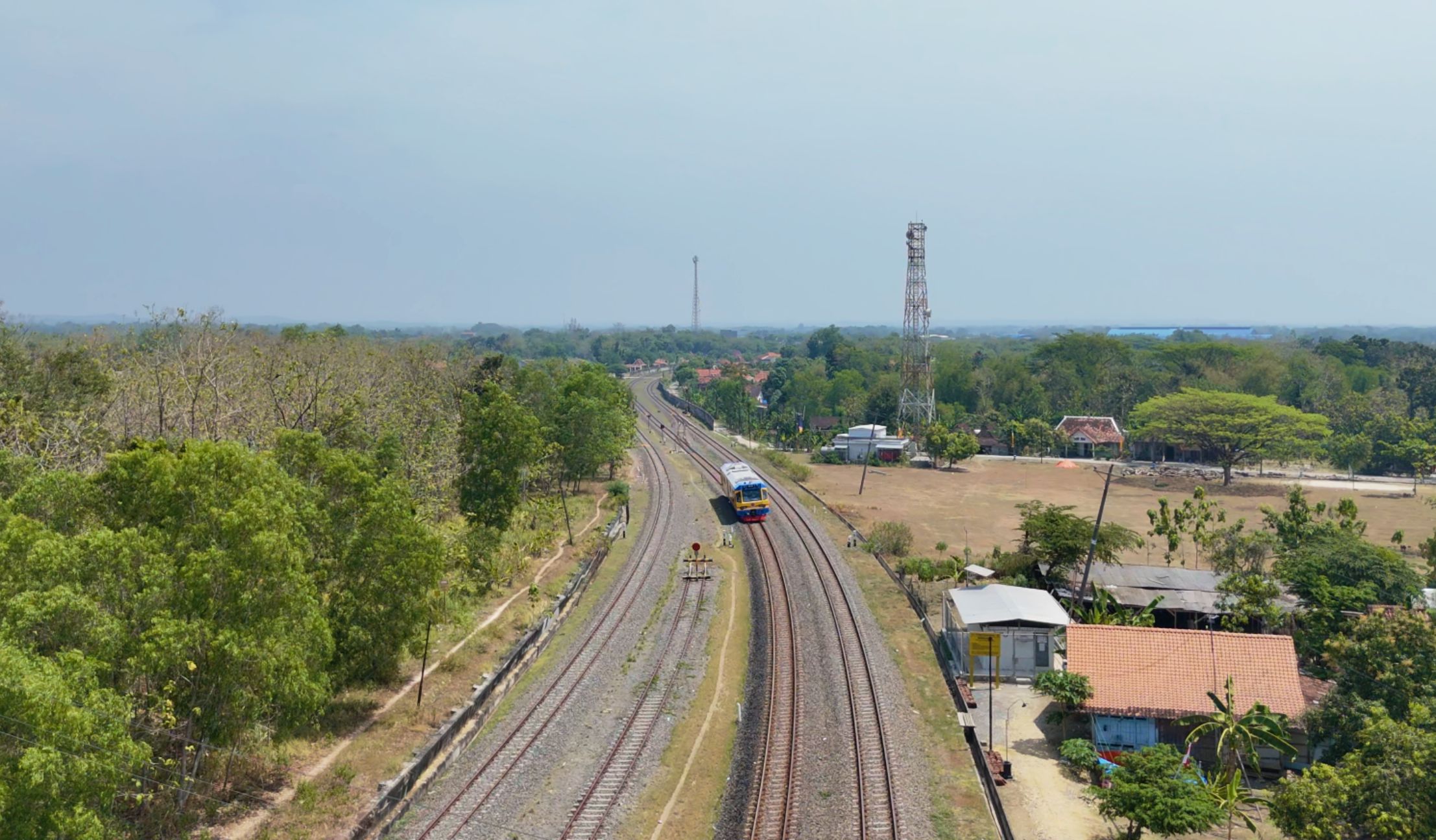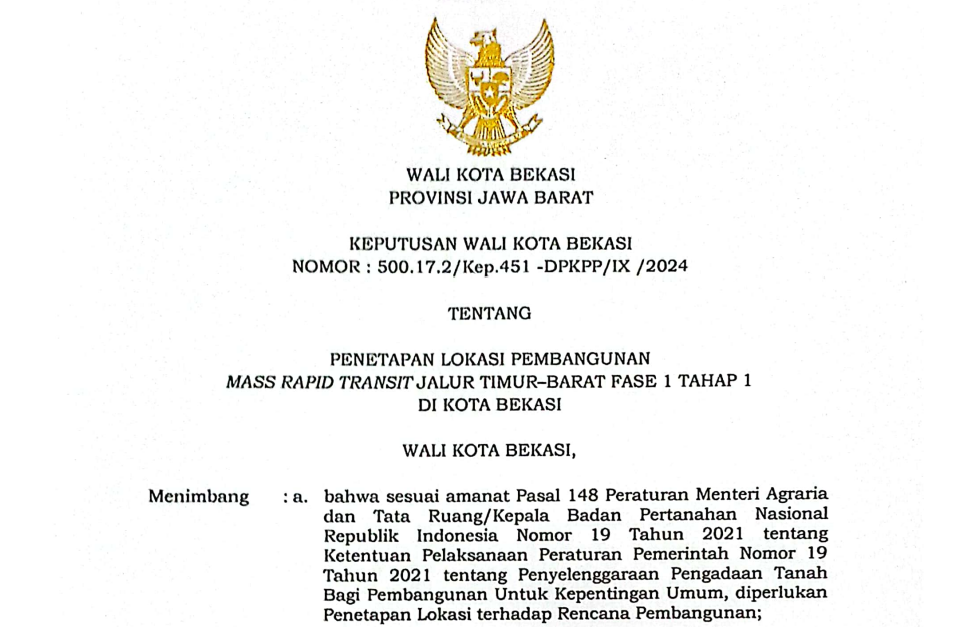CC 300 Locomotive Carry Out Load Test of Simpang Joglo Bridge
Surakarta – CC 300 locomotive carries out an official mission in the city of Solo. Official duties were carried out by two "red" locomotives on the loading test agenda for the Joglo intersection bridge, Thursday (24/10/2024). The CC 300 locomotive crossing point is between the Solo Balapan Station – Kadipiro Station plot, right above the Simpang Joglo Surakarta elevated rail line.
The Head of the Prayudi Railway Maintenance Center and several staff were seen directly on the Simpang Joglo bridge, monitoring the condition of the bridge construction which was being passed by eight locomotive trains.
Prayudi supervised the mobilization from the Ngrombo Workshop to Solo Balapan Station the day before Wednesday (23/10/2024), until the day of the bridge testing agenda.
"The operation of the CC 300 Locomotive, two loco units, is a form of contribution from the Railway Maintenance Center to the development of national railway infrastructure, in this case we can see when the CC 300 locomotive, along with other locomotives, passes over the Joglo intersection bridge to determine the strength level of the bridge construction. "explained Prayudi when he witnessed the CC 300 locomotive carrying out a static test on the Simpang Joglo bridge, not forgetting to capture the moment with his device.
Eight series of locomotives were deployed to test the durability of the bridge. This rare moment represents collaboration between regulators and railway operators. Two of them are CC 300 locomotives flanked by six diesel electric locomotives coded CC 200 belonging to PT Kereta Api Indonesia (Persero).
In order, the eight locomotives are Locomotive CC 2030107, Locomotive CC 2010402, Locomotive CC 201 04 06, Locomotive CC 300 12 01, Locomotive CC 300 12 03, Locomotive CC 2017805, Locomotive CC 2018317, Locomotive CC 20 39801. On the trail of history, series eight locomotives is a rare moment. And, the load test agenda for the Simpang Joglo bridge witnessed the passing of eight sets of locomotives on the same rail line.
With the series of eight locomotives, the total weight imposed on the bridge is 684 tons. The load consists of six CC 201 locomotives (84 tons/unit) and two CC 300 locomotives (90 tons/unit).
The locomotive series carries out load tests using two methods, namely static load tests and dynamic load tests on the elevated railway bridge structure.
The static load test was carried out by positioning eight locomotives forward from Kadipiro Station towards Solo Balapan Station.
Dynamic load tests are carried out using two loading methods, namely loads generated via shakers and ambient loads with a running locomotive.
The load test process went smoothly as planned by the organizers. But behind the load test activity, there is a preparation process carried out by the Railway Maintenance Center technical team. The team provided assistance in the operation of locomotive facilities for the load test activities.
Before departure, a joint inspection was carried out on two CC 300 locomotive units with PT KAI (Persero) Daop 4 Semarang on rail line number two in the Ngrombo Workshop area. Then, a facility shunting activity was carried out by the Railway Maintenance Center's ASP (Railway Facilities Crew) to the gate of the highway rail line at Ngrombo Station, to then be handed over to the Machinist of PT KAI (Persero) Daop 4 Semarang who was tasked with operating the facilities on the highway rail line.
The two facilities departed at 14.16 WIB the day before for Solo Balapan Station with a route passing through Brumbung Station. The train routes covered include Padas Station, Telawah Station, Karangsono Station, Gundih Station, Sumberlawang Station, Solo Balapan Station, then the final stop at the Solo Balapan Locomotive Depot at 19.54 WIB.
Don't forget to check the machine after the mobilization activity is complete, as well as the temporary stabling facilities at the depot.
On the day of the load test, a circuit was carried out from the Solo Balapan Locomotive Depot to Kadipiro Station at 07.00 WIB. The departure method is per two locomotives, and a total of eight locomotives are assembled at Kadipiro Station.
Before carrying out the test, a briefing was conducted led by the Director of Railway Infrastructure, Hengky Angkasawan, as well as representatives from PT Wika KSO regarding the load testing scheme. The testing activity went smoothly and according to plan, finishing precisely at 16.00 WIB.
At 16.43 WIB, the CC201 and CC300 locomotive series were moved to Solo Balapan Station with two locomotives, then the series was released.
At 18.00 WIB, it was reported that two CC 300 locomotives had been mobilized to the Ngrombo Workshop, Railway Maintenance Center.
After carrying out official duties in the field, according to the CC 300 Locomotive procedures, a joint inspection is carried out by the Facilities Supervisor and work partners, according to the maintenance check sheet. (yogo)






.jpg)




Komentar
LOGIN FOR COMMENT Sign in with Google